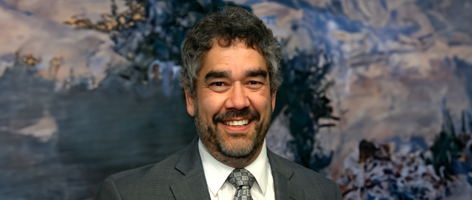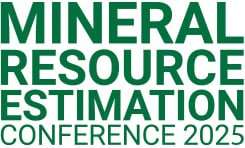Keynote insights: Mo Srivastava
We’re excited to announce Mo Srivastava from RedDot3D Inc as a keynote speaker for the Mineral Resource Estimation Conference 2025! In his address, Mo will share his personal and professional journey in using geostatistics to map seizure risk in his own brain following a stroke. This unique talk will offer new perspectives and innovations in both neuroscience and mining.
Mo Srivastava is a Resource Estimation Consultant at RedDot3D Inc.

Could you provide a brief overview of your keynote address?
This keynote address describes the use of geostatistics in a neuroscience case study. It is as much a professional contribution as it is a personal journey, with the brain that is the focus of the case study being my own. The spatial mapping task described in this presentation arose during my recovery from a left-hemisphere stroke that left me at risk of seizures. In the first post-stroke meeting with my neurologist, she showed me digital images that were very similar to what I am familiar with from my resource estimation consulting work. I realised that it would assist my recovery if information from 2D MRI slices could be mapped onto the brain's surface, a mapping task that has much in common with transposing 2D geophysical slices onto wireframes from a 3D geology model. When I was told that no such tool exists for clinical neurologists, I offered to develop the tool.
This talk presents a study that uses procedures from mineral resource estimation, indicator kriging and locally varying anisotropy, to produce a 3D map of the likelihood of seizure across the surface of my brain. This proof-of-concept study convinced my neurologist that I wasn't so stroke-damaged that I had become barking mad. Even though she was initially sceptical, she understood that, if it could be produced, this 3D probability map could be integrated with neuroscience knowledge of the brain's functional anatomy, making early warning signs predictable.
What key takeaways would you like attendees to gain from your talk, and how do you believe these insights can be applied to their work in resource estimation?
Key takeaway #1: That the spatial interpolation toolkit that resource estimation specialists have developed over the last few decades for use in mineral resource estimation is applicable to important problems in entirely different fields that also get involved with spatial interpolation.
Key takeaway #2: That the direct estimation of probabilities (rather than grades or other physical/chemical attributes) can greatly assist decision-making. In the mining industry, there are decisions that can be made without a grade estimate and, instead, with a sound estimate of the probability of occurrence of a specific event.
How does your talk address current challenges in mineral resource estimation today?
Many deposits are topologically or geometrically complex, with geologists modeling convoluted 3D wireframes that are not only the divisions between domains but also, at times, are the surface on which we would like to be able to map information. The methodology shown in this neuroscience could, for example, be applicable to mapping what is often called the smear-gouge ratio directly onto faults to better understand where those faults serve as conduits that enhance flow of hydrothermal fluids and where they serve as barriers to flow.
The 0/1 indicator approach used in this study can also be used to integrate qualitative and quantitative information in earth science applications. Different types of information often appear contradictory when coded as hard data but can be properly integrated when expressed as probability distributions that overlap. The multiple-lines-of-evidence approach aims to resolve ambiguities and uncertainties by finding overlaps in the probability distributions of different types of data.
Why do you think events like the Mineral Resource Estimation Conference are important for advancing best practices and innovation in the industry?
Events like the MREC are critical for sharing ideas and for networking. The opportunity to meet colleagues face-to-face and to discuss practical innovations is invaluable. The catalysts for innovation are often ideas that come from a different field of application. Cross-fertilisation between ideas from seemingly unconnected disciplines can lead to tried-and-tested methods from other fields being ready for use in a different setting.
